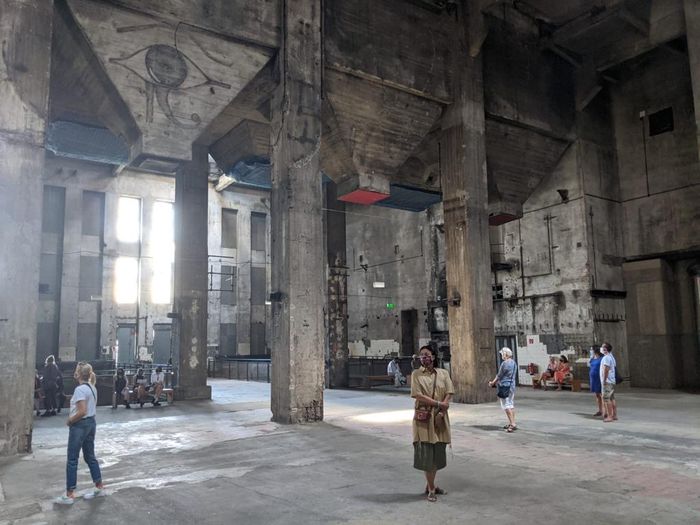The Smell of Concrete in the Rain: Michael McKinnell
In the first of a series exploring the lives of famous figures lost to Covid-19, Olivia Jacklin discusses the life and work of brutalist architect Michael McKinnell.
Ian Fleming, the author of the James Bond books, named his well-known villain Goldfinger after the real-life architect Erno Goldfinger. As an architect, Goldfinger pioneered the design of buildings using concrete— buildings that were austere and soulless. These concrete structures divided society, with some seeing in them remnants of the Soviet era, and others an utterly optimistic building material. During the 1920s, concrete was hailed as the ultimate building material: it was used to build roads, bridges and buildings. Now, concrete is the second most-consumed product in the world, with the only commodity consumed more being water.
Goldfinger was not the only architect to fall in love with concrete. Concrete also defined Michael McKinnell’s career. Born in 1935, McKinnell studied architecture at Manchester University before gaining a masters from Columbia. It was here that he entered and won a competition to design Boston’s new City Hall. In the early 1960s, Boston was a city suffering from high unemployment and the perceived problem of ‘white flight’: predominantly white families abandoned the city in favour of the suburbs, leading to self-segregation, devaluing of house prices, and lower school performance within the inner city. So, Boston set about building to regenerate the city. The material the city chose was concrete. McKinnell’s brutalist design for the hall was selected out of 256 entries. Then just 26, McKinnell moved to Boston as a co-founder of the firm Kallmann, McKinnell and Knowles.
Boston City Hall can be thought of as a critical success. Ada Louise Huxtable called it “one of the most handsome buildings around,” and “a solid, impressive demonstration of creativity and quality—uncommon currencies in today’s environment.” Yet this does not take away from the fact that many see the building as ugly and lacking in any kind of humanity. Less than a decade ago Thomas Menino, then City Mayor, threatened to knock down the building.
McKinnell said of the hall, ’We believed that concrete was the appropriate material to use because it symbolised longevity, it symbolised permanence. It also symbolised a faith in the future—that the building was going to last. And that was an act of resistance against the expendable commercial architecture of the time.” He added, “If we could have, we would have used concrete to make the light switches.”
“Boston City Hall can be understood as both ugly and beautiful”
Concrete has proven not to be everlasting. It deteriorates from the inside out and as such, it can be hard to know when a building needs repairing. Nevertheless, buildings like Boston City Hall remained — admittedly partly due to the enormous cost and waste that would be involved in removing them, but most importantly as a testament to the precision and skill required to build them. Concrete is not like bricks and mortar: every detail must be worked out in advance. For a material perceived as harsh and soulless, a huge amount of careful planning is needed in its use and construction.
In more recent times, photography has allowed people to appreciate concrete buildings for their sharp lines and, increasingly, the idealism they embody: an aspiration to create divisive yet perfect structures out of an unforgiving and unwieldy material. Good art isn’t necessarily beautiful, though Boston City Hall can be understood as both ugly and beautiful.
While the people of Boston have accepted their City Hall — mayors no longer pledge to tear it down — there is no doubt that concrete finds itself at a crossroads. It is seen as too outdated to be modern, but too young to be classic. Maybe in time, we’ll come around to love these hulking concrete brutes.
McKinnell’s defining works were built out of concrete, a tricky material that can tame nature with its weight and endurance if handled with great skill and attention to detail. His wider legacy is associated with subtlety and detail, despite the seeming irony in his choice of material — a material that is synonymous with imposing and controversial — if resplendent — buildings and structures.
McKinnell died in late March after a short Covid-related illness.
 News / Clare Hall spent over £500k opposing busway 24 December 2025
News / Clare Hall spent over £500k opposing busway 24 December 2025 Comment / The ‘class’ of Cambridge24 December 2025
Comment / The ‘class’ of Cambridge24 December 2025 News / Caius mourns its tree-mendous loss23 December 2025
News / Caius mourns its tree-mendous loss23 December 2025 Comment / Yes, I’m brown – but I have more important things to say22 December 2025
Comment / Yes, I’m brown – but I have more important things to say22 December 2025 News / Girton JCR publishes open letter expressing solidarity with Palestine25 December 2025
News / Girton JCR publishes open letter expressing solidarity with Palestine25 December 2025










